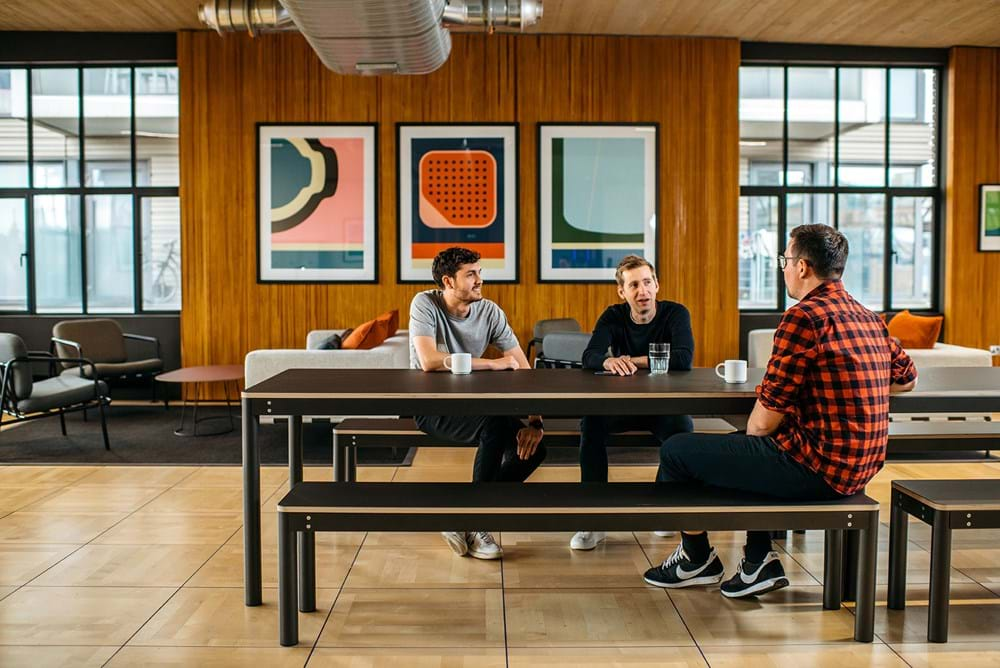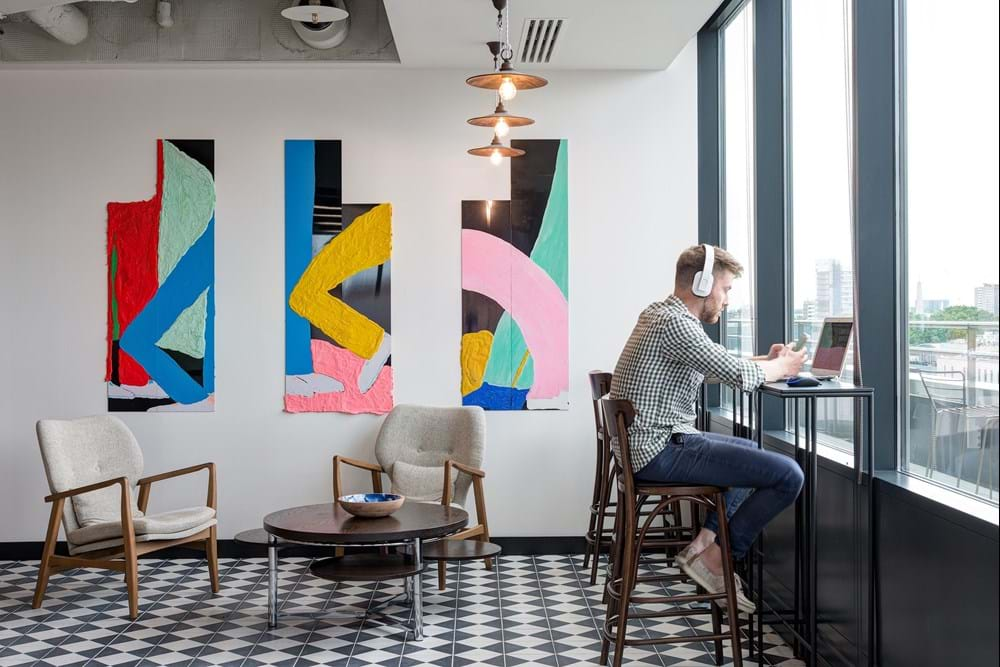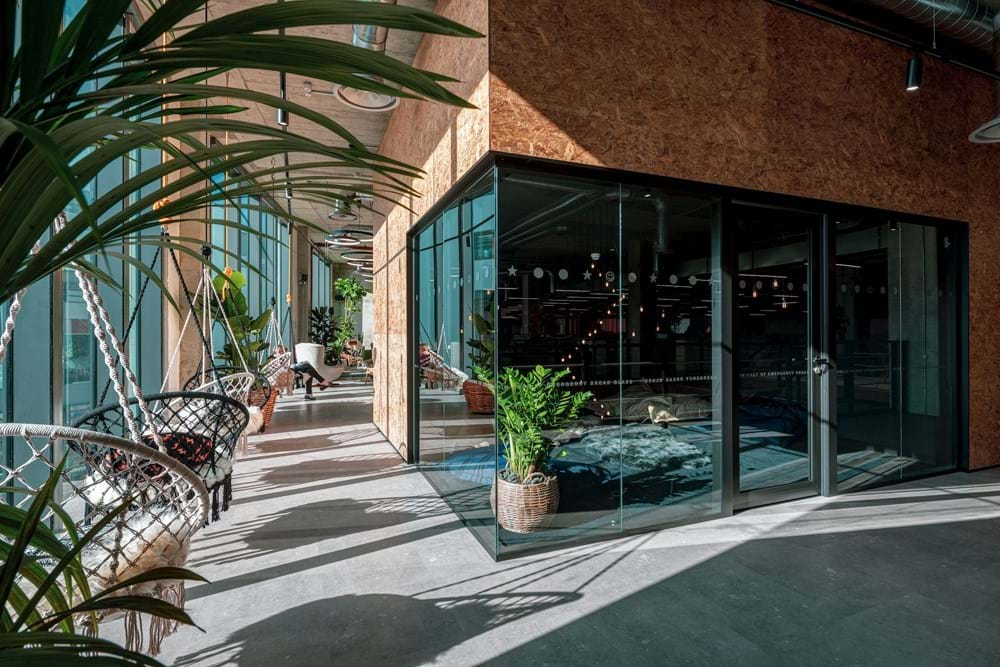Five reasons why a workplace transformation – and future-proofing your office – is critical to achieve business success
A little investment in the office can go a long way, but more funding can change an organisation’s internal culture and external brand almost overnight. Here follows a handful of compelling reasons why investing in your office can pay back many times over.
It can upgrade an organisation’s office culture – for the better
A large-scale workplace transformation provides an excellent opportunity to evolve the mindset of an organisation, while updating its brand and business culture.
Moving or refurbishing offices is a physical manifestation of change and, as with digital transformation – which might happen at the same time – it can become a fantastic enabler for staff, especially if their needs and desires are taken into account.
However, if a focus on employee wellbeing is not at the heart of the workplace transformation, the result will be a sub-optimal office environment. If it lacks authenticity it won’t stand up for long. It is vital to create an office with a purpose, and not merely for show.
A breakout bench at Joseph Joseph, perfect for taking a quick break or catching up with colleagues
To cultivate a winning culture employees need to be thought of as customers. How can business leaders make their employees’ lives easier, so they feel more at home while at work? If workers feel supported and handed the chance to shape the organisation’s culture, then office productivity will receive an enormous boost.
Going all-in on technology can help fulfil potential
When pressing the reset button and undertaking an office refurbishment, there needs to be a significant outlay on technology. In the modern office, business leaders who have invested in technology that empowers workers – promoting collaboration rather than fostering isolation – have seen the positive effects on productivity.

A smartly configured workplace replete with appropriate tech can make all the difference to your business, motivating employees and impressing potential clients, partners and investors alike. How you operate says everything about your company.
Technology will unlock the potential of the workforce, attract and retain top talent – but executives must be committed. That means providing decent training, keeping abreast of the latest products in the market, as well as constantly bolstering cybersecurity, and improving cyber hygiene.
It pays off, handsomely; a recent Gallup report found that organisations that embrace digital workplaces are, on average, 21 per cent more profitable. Deloitte research discovered that companies with a strong internal social network channel are 7 per cent more productive.

Dan Bladen, Chief Executive of Chargifi, a wireless charging solution, explains the phenomenon: “The expectation of a seamless experience created by consumer tech is influencing employee retention levels, as millennials in particular, are now expecting an intuitive experience across the board.”
Future-proofing designs will attract young talent
By 2020, it is estimated that almost half the global workforce will be made up by Millennials (35 per cent) – roughly those born between 1981 and 1996 – and younger people from Generation Z (24 per cent). The modern workplace needs to accommodate this core demographic, most of whom are digital natives. Undertaking office fit out with a view towards the future is critical.

“The millions of Millennial and Gen Z professionals entering the workplace are heightening the drive to digital transformation,” states Myles Leach, Managing Director of NFON UK, a European telecoms company. “To attract and retain these digitally-oriented employees means that businesses must become more responsive to technology innovation”.
A room with a view at Mindspace
Zoe Humphries, a Senior Workplace consultant at office furniture specialists Steelcase, agrees. “The informal ‘residential’ look and feel continues to be a key tool for attracting talented, younger workers,” she says. “However, there will be more of a focus on design and materiality including introducing more customisable products using finishes, materials and colours.”
Design for the future and incorporate the necessary zones
Collaborative behaviour has influenced design in offices, and vice versa – a mix of spaces encourages connections, so meetings between members are not serendipitous but a result of the design. “From putting the milk at the furthest point away from the supermarket check-out, to exiting via the gift shop, our physical environment is often designed to manipulate our behaviour,” says Margie Dimech, Employee Engagement Consultant at Radley Yeldar. “And these behavioural nudges can be used in office design too.”
The modern office “should have spaces to support the five ‘work modes’: focus, collaborate, learn, socialise and rejuvenate”, according to Zoe Humphries from Steelcase. Most successful modern workplaces include meeting, social, wellbeing, collaboration, and play zones, to accommodate these important modes of work.

Adrienne Gormley, Head of Europe, the Middle East and Africa at Dropbox, says: “Work about work will hit a crisis point as businesses and employees alike continue to find ways to be more focused and empowered. Having the right thinking space, virtual space and psychological space will become an important way to deal with this.”
Focusing on employee wellbeing will reap rewards
The greatest asset to any organisation is its employees, and keeping them motivated and happy is paramount to success.
A workplace transformation is an opportunity to boost employee wellbeing through design. For example, when planning a new office ensure there are plenty of outdoor views and daylight from all angles. Notably, Cornell University found that workers in offices with natural daylight reported an 84 per cent decrease in headaches, eye strain, and blurred vision.
The Chilli Bean room at Studio 19, for SLG Brands at their international HQ at the Brewery Quarter in Cheltenham
Further, the incorporation of nature-inspired materials and elements in the workplace have been proven to help create more positive working environments – ones that stimulate the senses, increase focus and productivity, sparking creativity and reducing stress.
“Connecting to nature makes people feel human and, the more digital the world becomes, the more people are craving nature,” says Zoe Humphries from Steelcase. “Developing from green walls and plants on desks, we will start to see sound masking systems mimicking natural sounds from nature.”



